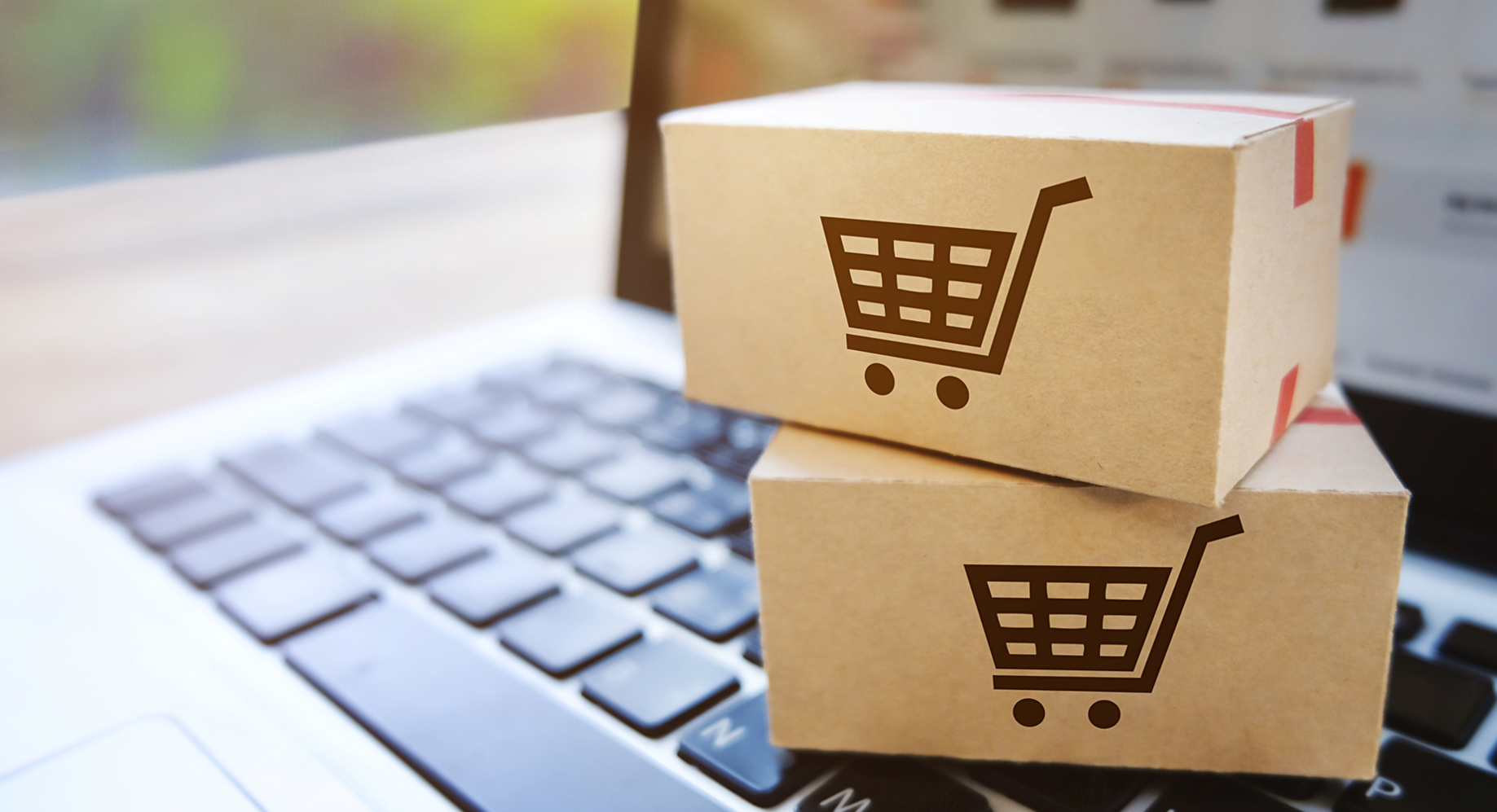Global E-Commerce and the Impact of COVID-19
Global E-Commerce and the Impact of COVID-19
The global e-commerce market has, over the last two years, undergone revolutionary change. Consumers have grown accustomed to buying items from the comfort of their own home – a change spurred largely by strict lockdowns and restrictions on movement – and many analysts agree that this shift in consumer behavior has propelled the e-commerce industry forward by at least five years. This shift in shopping behavior, moreover, looks likely to be permanent and not transitory.
Global E-Commerce Market Overview
The global e-commerce market is expected to reach $4.92 Trillion in sales by the end of 2021, representing 17% year-on-year growth. This growth is, however, down from the stellar 26% increase experienced by the market in 2020. Sustained double-digit growth is forecast for the coming three years, representing a tremendous opportunity for businesses that have not yet provided their customers with an online sales channel.
Global Retail E-commerce Sales (USD Trillions, % Change YOY)

Businesses that had not yet invested in establishing an online presence were the ones most affected by the pandemic. According to data from Yelp, 163,735 businesses had closed due to the pandemic as of August 2020, with 60% of these closures being permanent (97,966). Businesses that moved online, on the other hand, have largely been able to survive or even thrive.
Global Retail Sales (%) (2019 – 2025) *
 *eMarketer, May 2021
*eMarketer, May 2021
The pandemic has also significantly impacted the growth of certain product categories. Hardware-based products, for instance, such as laptops, TVs, phones & video game consoles have seen a 134% increase in order volume since the start of the pandemic.
This is largely due to lockdown and confinement-induced changes in consumer needs. As more workers moved to remote work, the need for suitable computer and office equipment drove up sales. Similarly, house-bound consumers have looked to update their home entertainment systems, driving up sales of TVs, gaming consoles, and other such products.
The sporting goods category also benefitted from confinement measures as people looked to replace their gym memberships with home exercise equipment and the sporting goods necessary for outdoor recreation.
E-Commerce Market Breakdown by Region
Looking at e-commerce sales figures by region, Asia-Pacific leads the pack with $2.4 trillion in sales in 2020. The region — home to e-commerce juggernauts Alibaba, JD, and Pinduoduo among others — saw a 26% growth in e-commerce sales.
Within the region, China is a frontrunner by some margin, and according to eMarketer is well on its path to becoming the first country in history in which e-commerce sales will amount to more than half of retail sales, with 52.1% of retail sales forecast to take place through online channels in 2021.
The top spot in terms of growth, however, is held by Latin America, which saw a 37% increase in e-commerce sales compared to 2019. Many countries contributed to this outstanding growth with Argentina leading the way; the country’s online retail sector grew by 79% in 2020, helped in large part by the presence of homegrown e-commerce giant Mercado Libre, often dubbed the “Amazon of Latin America”.
Mercado Libre’s sales saw a surge of 46.5% in Latin America in 2020. Its stock has also outperformed Amazon’s over the last year, increasing by just under 65% during 2020 compared to Amazon’s 33% increase during that period.
The Impact of COVID-19 on the Top Players in E-Commerce
Gross merchandise volume, or GMV, is often used to assess the health of e-commerce businesses. It indicates the total sales of merchandise over a given period and is calculated prior to the deduction of any fees or expenses. Considered alongside data from the financial statements of the top global e-commerce, a clear picture of the impact of COVID-19 on e-commerce can be gleaned.
Services e-commerce companies, such as those involved in ride-hailing and travel, suffered a sharp decline in GMV pushing them below their peers in the rankings of top B2C e-commerce companies by that measure. Expedia, for instance, fell from 5th place in 2019 to 11th in 2020, while Booking Holdings fell from 6th to 12th, and Airbnb fell from 11th to 13th. Despite the reduction in services companies’ GMV, the total GMV for the top 13 companies rose by 20.5% in 2020, surpassing the 17.9% in growth registered in 2019.
Demand Side E-Commerce Trends
The COVID-19 pandemic has brought about a plethora of changes in consumer shopping behavior. Some of these have proved positive for e-commerce retailers, while others have forced sellers to make substantial changes.
Post-Pandemic Transition from “Need Buying” to Indulgence Spending
Throughout the pandemic, consumers were limited as to where and when they could spend their money. According to McKinsey, 51% of US consumers reported a desire to splurge and indulge in “revenge spending” once the pandemic subsides.
Another figure, reported in the Deloitte consumer behavior tracker, shows that 47% of consumers surveyed reported delaying large purchases in 2020. This figure dropped to 37% in June 2021, indicating that consumers are beginning to spend more as they move away from necessity-based buying.
Ethical Shopping and Ethical Brands
During the pandemic interest in ethical shopping and ethical brands rose by 450% according to Google, while a survey done by Accenture revealed that 45% of consumers are making more sustainable choices when shopping and report that they will likely continue to do so.
Brand Loyalty Disruption
According to a McKinsey study, 75% of consumers tried new shopping behaviors during the pandemic while 39%, mainly millennials and Gen Z, deserted trusted brands for new ones.
Permanent Consumer shopping Behavior Change
Just under 49% of people who tried shopping online during the outbreak said they would do it more frequently once the pandemic subsides. This varies by geographical location, however; while 60% of Italians shopped online during the pandemic, less than 10% reported being satisfied with the experience. In contrast, 73% of Finnish consumers who shopped online during the COVID-19 pandemic said they would continue doing so after the crisis.
Supply Side E-Commerce Trends
Increasing consumer tech adoption, alongside changes imposed by the outbreak of COVID-19, has brought about significant changes that might well alter the e-commerce space permanently.
Click & Collect
Also known as curbside pickup, click & collect services have seen growing popularity during the pandemic due to consumers’ safety concerns. Orders placed online or by phone are packaged and then either put in the trunk of customers’ cars or set outside for pick up. Among stores ranked in the Digital Commerce 360 Top 500, just under 44% of the 245 retailers surveyed offered Click & Collect in 2020, a sharp increase from the 6.9% figure registered at the end of 2019.
Direct to Consumer
Direct to consumer brands are increasing in popularity and the COVID-19 pandemic has given these brands an extra boost. Consumer goods companies saw 70% growth coming from DTC sales online, and according to eMarketer, web traffic on DTC shops has doubled in the last two years.
Omnichannel Strategy
Omnichannel marketing strategies have become one of the most dominant trends in the e-commerce space. According to Google, omnichannel strategies drive an 80% higher rate of incremental store visits, while another study done on EU consumers found that 67% of consumers use multiple channels to conduct a single transaction.
Buy Now Pay Later
The BNPL model allows consumers to make an upfront payment toward a purchase, then pay the remainder off in a predetermined number of installments. E-commerce retailers get the full price paid, making this transaction one between the BNPL service provider – such as PayPal and Klarna – and the customer. BNPL market share worldwide is expected to double from 2.1% in 2020 to 4.2% by 2024.
Global e-commerce’s post-pandemic future
Looking forward, changes that were either ushered in or accelerated by the pandemic, look likely to prove permanent. Consumers who were introduced to the convenience of online shopping are unlikely to revert completely to old shopping behaviors, though the growth in e-commerce is expected to slow as more physical stores reopen and shoppers return to the high streets.
The Asia-Pacific region’s position as the largest regional e-commerce market is unlikely to change soon despite the continued rapid growth forecast for both Latin America and North America.
E-commerce market leaders have mostly cemented their positions, benefiting greatly from lockdowns and the associated changes in consumer behavior. Services e-commerce companies such as Expedia, Airbnb, and Uber, however, are an exception to this trend and may struggle to recover the positions they enjoyed before the outbreak of COVID-19.
Demand-side trends such as brand loyalty disruption and the increased interest in ethical shopping, promise to continue to play an important role, as do supply-side trends such as click & collect m-commerce, and BNPL. The exact degree to which this will be the case, however, remains to be seen and retailers will have to remain flexible to respond appropriately to these changes.
Author: Othmane Zidane
Sources
https://www.shopify.com/enterprise/global-ecommerce-statistics#2
https://www.statista.com/statistics/534123/e-commerce-share-of-retail-sales-worldwide/
https://www.yelpeconomicaverage.com/business-closures-update-sep-2020
https://www.bazaarvoice.com/blog/the-impact-of-covid-19-on-e-commerce-by-category/
https://www.statista.com/statistics/311357/sales-of-e-commerce-worldwide-by-region/
https://www.emarketer.com/content/mercado-libre-will-surpass-20-billion-ecommerce-sales-2020
https://www.emarketer.com/content/global-ecommerce-forecast-2021
https://www.fool.com/investing/2021/05/25/better-buy-mercadolibre-vs-amazon/
https://unctad.org/system/files/official-document/tn_unctad_ict4d18_en.pdf
https://www.thinkwithgoogle.com/consumer-insights/consumer-trends/pandemic-shopping-behavior/
https://www.investopedia.com/how-shopping-habits-changed-due-to-covid-5186278
https://www.digitalcommerce360.com/2021/02/19/ecommerce-during-coronavirus-pandemic-in-charts/
https://www.bigcommerce.com/blog/mobile-commerce/#common-benefits-of-mobile-commerce
https://www.businessinsider.com/mobile-commerce-shopping-trends-stats
https://www.groovecommerce.com/ecommerce-blog/mobile-ecommerce-examples/
https://www.imrg.org/blog/direct-to-consumer-booms-during-covid-19/
https://www.retaildive.com/news/how-nike-is-using-dtc-and-data-to-expand-its-empire/596602/
https://inviqa.com/blog/magic-disneys-omnichannel-experience
https://www.statista.com/topics/8107/buy-now-pay-later-bnpl/#dossierKeyfigures
https://www.retaildive.com/news/target-adds-buy-now-pay-later-options-with-affirm-sezzle/607842/
https://www.emarketer.com/content/voice-commerce-holds-promise-yet-shoppers-are-skeptical
https://medium.com/@Rubingh/the-year-of-voice-50aa2c6d3f5b
https://voicefront.ai/blog/how-starbucks-increased-their-mrpu-by-16-using-voice-commerce/




 *eMarketer, May 2021
*eMarketer, May 2021






